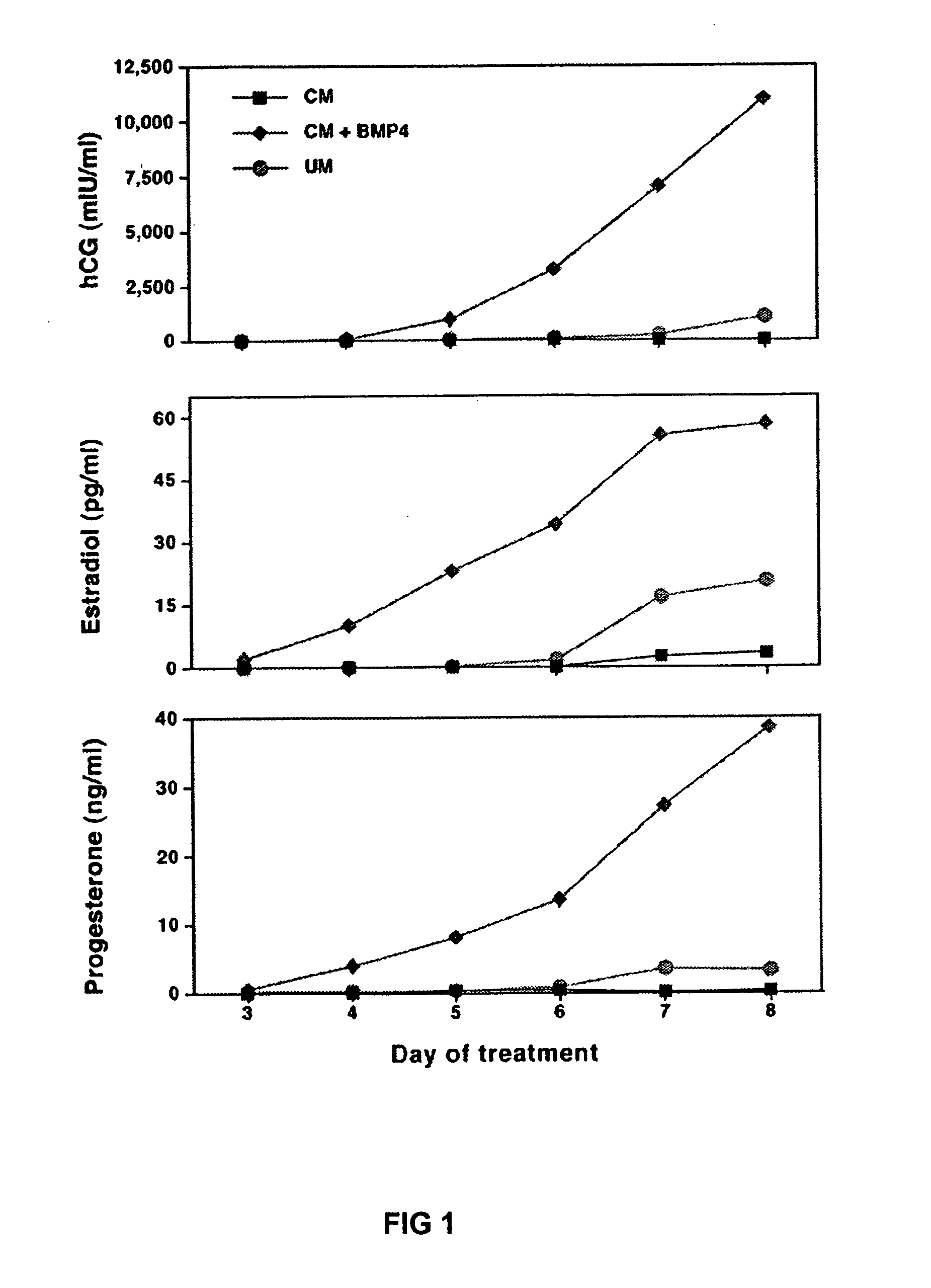Method for generating primate trophoblasts
a technology for primate trophoblasts and embryonic cells, applied in the field of primate trophoblasts, can solve the problems of difficult isolation, unresearched in significant amounts, and the technique of creating primate trophoblast cultures from embryonic cells or stem cell lines has not yet been reported, and the creation of useful cultures of trophoblast cells is not easy
- Summary
- Abstract
- Description
- Claims
- Application Information
AI Technical Summary
Benefits of technology
Problems solved by technology
Method used
Image
Examples
examples
[0019] A human embryonic stem cells line, H1, was cultured on a Matrigel™-coated plastic plate in medium that had been conditioned on mouse embryonic fibroblasts (MEF) and supplemented with basic fibroblast growth factor (bFGF) at 4 mg / ml. Human bone morphogenic protein 4 (BMP4) (R&D Systems, Minneapolis, Minn., also the source for other recombinant proteins listed here) was applied to the stem cells at concentrations of 1, 10 and 100 ng / ml of culture medium. The stem cells were as a monolayer and not aggregated in embryoid bodies. The H1 cells then underwent a dose and time dependent morphological change, becoming spread out, flat, thin and enlarged or elongated with their nuclei becoming smaller. These changes are consistent with the morphology of trophoblast cells. The morphological changes began with the cells at the edge of each colony and spread inward from there. The changing morphology became evident on day 2 for cultures treated with 100 ng / ml BMP4, day 3 or 4 for cultures ...
PUM
| Property | Measurement | Unit |
|---|---|---|
| concentration | aaaaa | aaaaa |
| concentration | aaaaa | aaaaa |
| concentrations | aaaaa | aaaaa |
Abstract
Description
Claims
Application Information
 Login to View More
Login to View More - R&D
- Intellectual Property
- Life Sciences
- Materials
- Tech Scout
- Unparalleled Data Quality
- Higher Quality Content
- 60% Fewer Hallucinations
Browse by: Latest US Patents, China's latest patents, Technical Efficacy Thesaurus, Application Domain, Technology Topic, Popular Technical Reports.
© 2025 PatSnap. All rights reserved.Legal|Privacy policy|Modern Slavery Act Transparency Statement|Sitemap|About US| Contact US: help@patsnap.com

